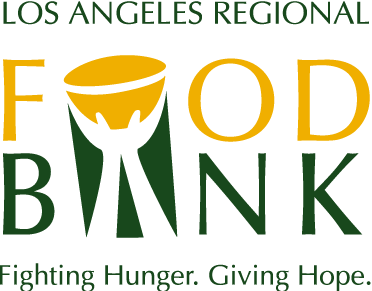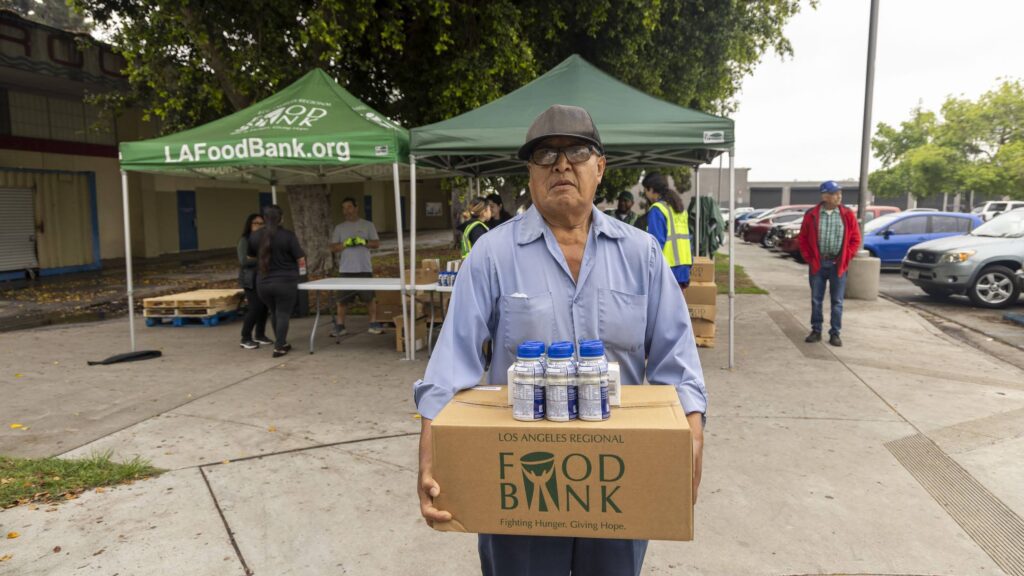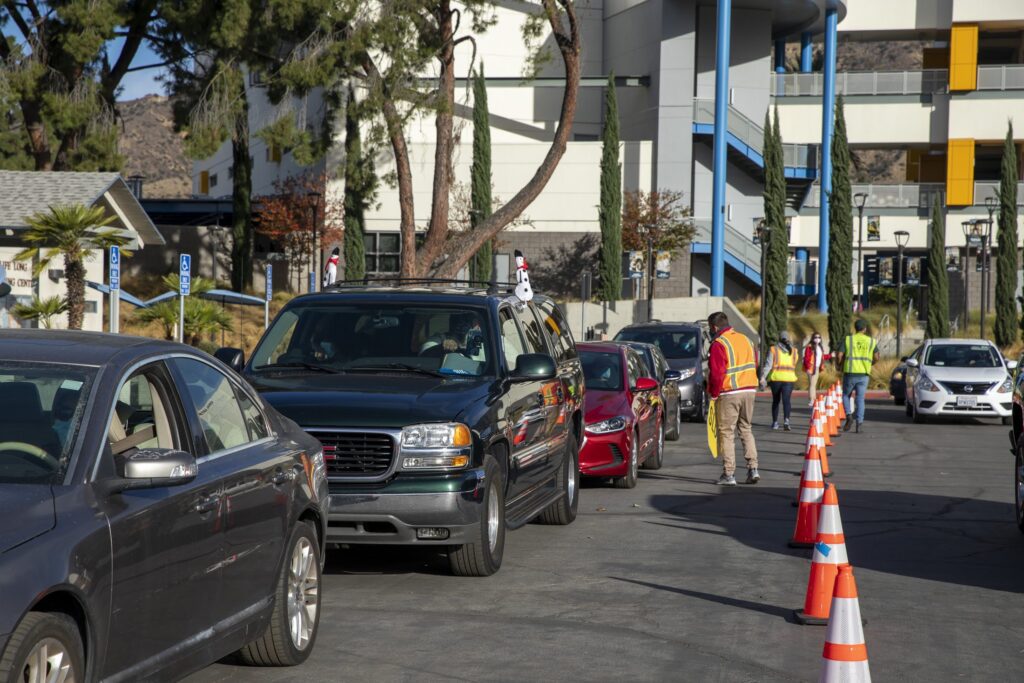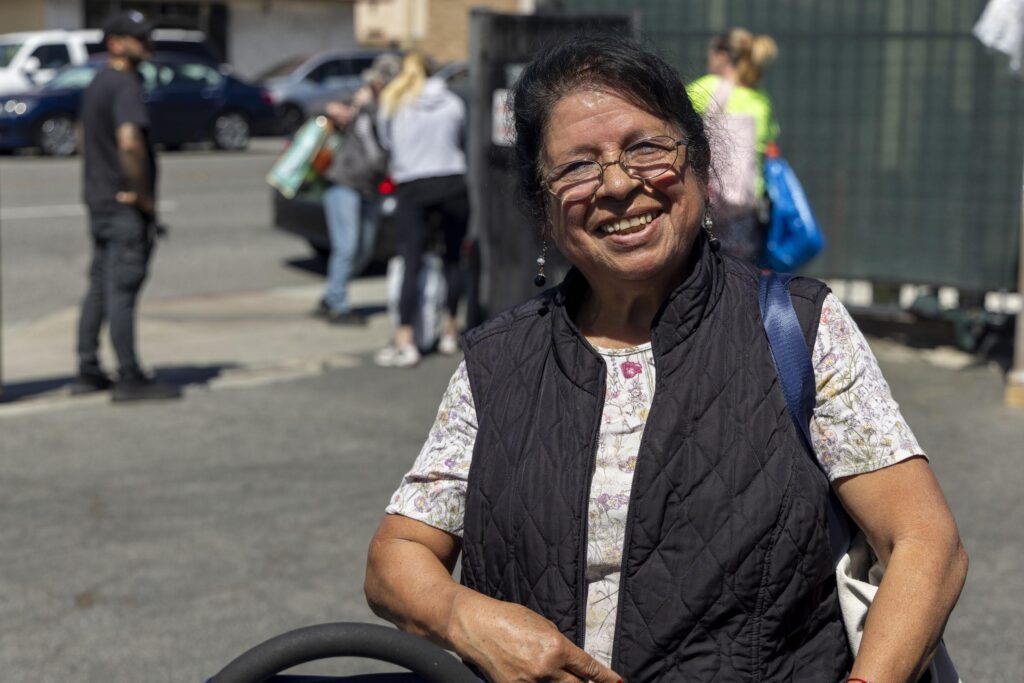5 Ways the LA Regional Food Bank Fights Child Hunger
5 Ways the LA Regional Food Bank Fights Child Hunger
No child should go hungry. The Food Bank and our partners are committed to tackling children’s food insecurity through various initiatives.
Children who experience hunger are more likely to develop and suffer from lifelong psychological and academic effects, further perpetuating the cycle of food insecurity. Creating routines around balanced meals fosters a sense of stability and foundation for developing healthy eating habits throughout their formative years and beyond. However, for one in four children in Los Angeles County, eating regularly balanced meals can be challenging.
Young children deserve a healthy start to grow, learn, and play at their full potential. The Los Angeles Regional Food Bank and our community partners are dedicated to helping make sure that food-insecure children have the food and nutrition assistance they need to thrive in and outside of the classroom in many ways, including the following initiatives.
1. BackPack Program
The BackPack Program alleviates child food insecurity for kids who count on school meals during the week and may not have food access during the weekend. Food kits are packed with nutritious food products, depending on the season and availability, such as low-fat milk, 100% juice, oatmeal, peanut butter, whole grain pasta, spaghetti sauce, pancake mix, macaroni and cheese, brown rice, vegetable beef soup, black beans and chunk chicken or tuna and cereal.
In 2021, the BackPack Program distributed over 7,760 backpacks containing over 168,510 pounds of food to 850 children at five school partners, including schools in the Los Angeles Unified School District (LAUSD) and Compton Unified School District (CUSD).
Read more about the BackPack Program>
2. Summer Lunch/Breakfast
The Food Bank’s Child Nutrition programs provide thoughtful, balanced meals and food kits for children facing food insecurity. The Summer Lunch/Breakfast program this year started on June 6. Through August 12, 2022, it will provide nutritious morning and midday meals to children who typically receive breakfast and lunch during the school year.
To learn more about how your child can participate in this program and to get details about service times, types of meals offered and locations, please visit our Summer Lunch page.
3. After School Lunch
Unfortunately, some kids in LA County don’t have a healthy meal waiting for them after a full day of school, socializing and learning. The Food Bank’s After School Meals program provides food security staples to at-risk children and youth aged between five and eighteen after the school day ends.
With the help of partners, the Food Bank distributed over 88,000 meals to over 1,100 children through this program in 2021 alone. Our After School Meals Program, also known as the Child and Adult Care Food Program (CACFP), is the nation’s most extensive charitable meal service program exclusively for under-served, at-risk children, founded by Feeding America in 1993. The Child and Adult Care Food Program (CACFP) is a federally funded program that fills the nutrition gap when other federal meal programs are not operating. It helps ensure children receive nutritious meals after school at schools, community and recreation centers, YMCAs, Boys & Girls Clubs, and other sites.
Read more about the After School Meals program>
4. Direct Distributions
Drive-through distributions were iterated from the Food Bank’s Mobile Food Pantry (MFP). Before the pandemic, the MFP would provide nutritious food to communities in need, such as food deserts or where there weren’t as many Food Bank partner agencies. While prioritizing the health and safety of clients, partners, volunteers and staff throughout the pandemic, drive-through distributions have been organized whenever possible to reduce as much personal interaction per Public Health guidelines. Drive-through distributions have helped many food-insecure families throughout LA County, many of whom are with children. As of June 2022, there have been 515 distributions since the beginning of the pandemic.
Alejandro Ortiz is one of the millions still being affected by the financial and health impacts of the pandemic. After contracting the virus, Ortiz could not work and provide for his wife and four daughters. As the virus continued to run its course for Ortiz, his daughters feared that they would lose their father on top of going outside and contracting the virus themselves.
Thankfully, now healing from the virus, but without a steady job, Ortiz continues to utilize as many resources as possible to help support his family, including going to the monthly food distributions at Clara Street Park.
“We try not to focus on the hard situation [of the pandemic] and make the most out of it,” Ortiz said. “With the help we receive here, it’s very useful for us because my wife takes advantage of all the food we receive.”
Learn more about Ortiz and the many other families who benefit from direct food distributions here.
5. Partner Agency Network of 600+ other non-profits throughout LA County
The Food Bank fights hunger with the help of hundreds of partner agencies throughout the County. Agency partners are nonprofit organizations that could be a church, volunteer or community organization that help the Food Bank distribute the food for specified programs. Without agency partners, the Food Bank wouldn’t be able to expand our reach to as many communities that need help. They have invaluable insight while interacting directly with our clients, who often take care of children.
The Food Bank was fortunate to meet with a mother caring for a family of six at a distribution hosted by Food Bank partner agency Central City Neighborhood Partners (CCNP). Alondra Flores, a mother of three, was involved in an accident that temporarily immobilized her and hindered her ability to provide for her family. That’s where CCNP stepped in to help. Typically, Flores would visit CCNP regularly to pick up meals for her kids and family; however, with surgery leaving her bedridden for six months, she couldn’t. CCNP thankfully continued to provide meals to the only ones in her household who could pick up food at the time – her underage children.
“This support is not just for me; it’s for many people and for many children whose parents do not have sufficient resources to cope with the pandemic,” Flores said. “I am very happy and grateful to everyone, CCNP, organizations, and everyone who is supporting us in this situation.”
Read more about her story here.
There is no better time than now to help fight child hunger. Invest in our community and its future when you donate today!





